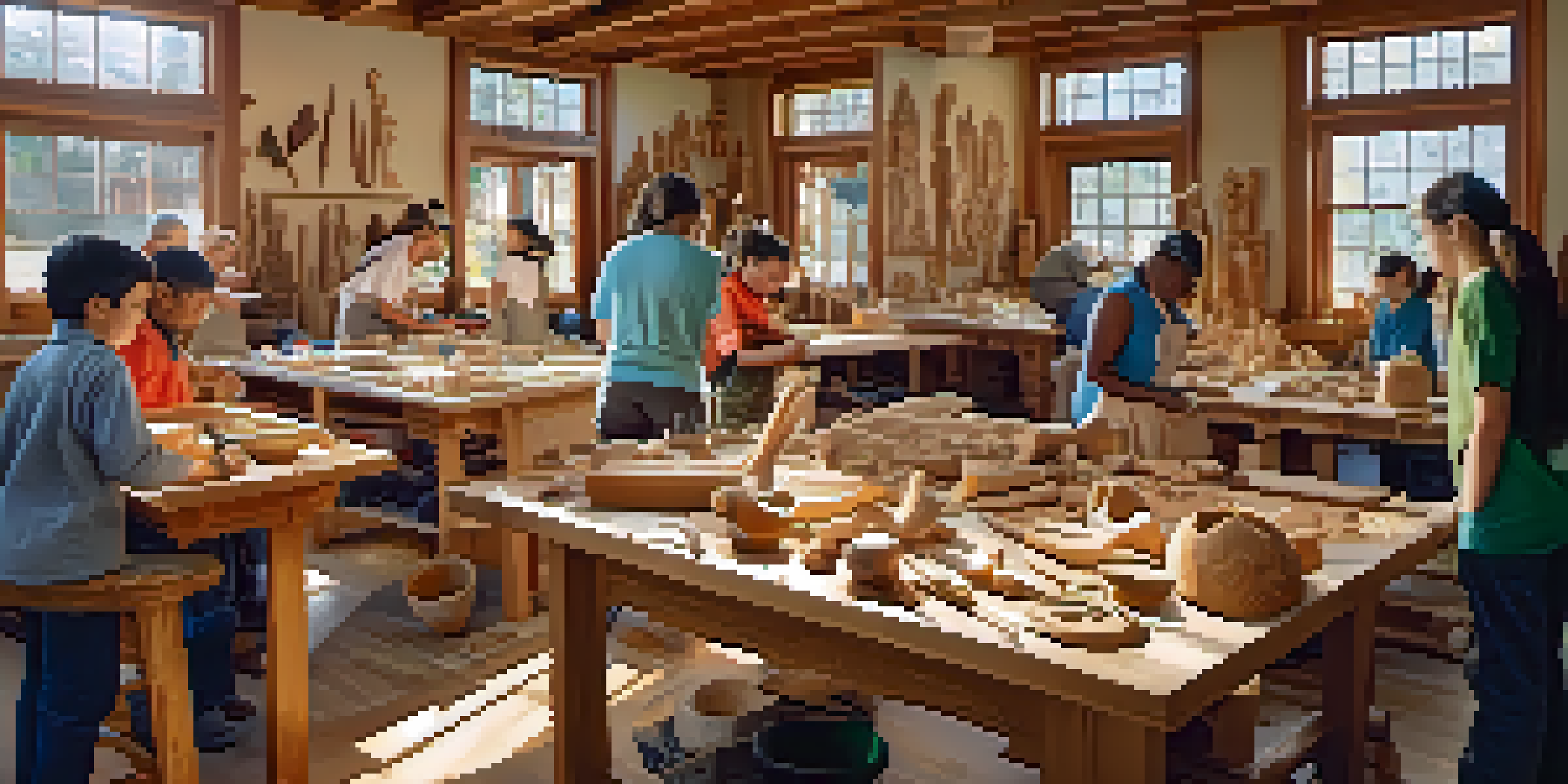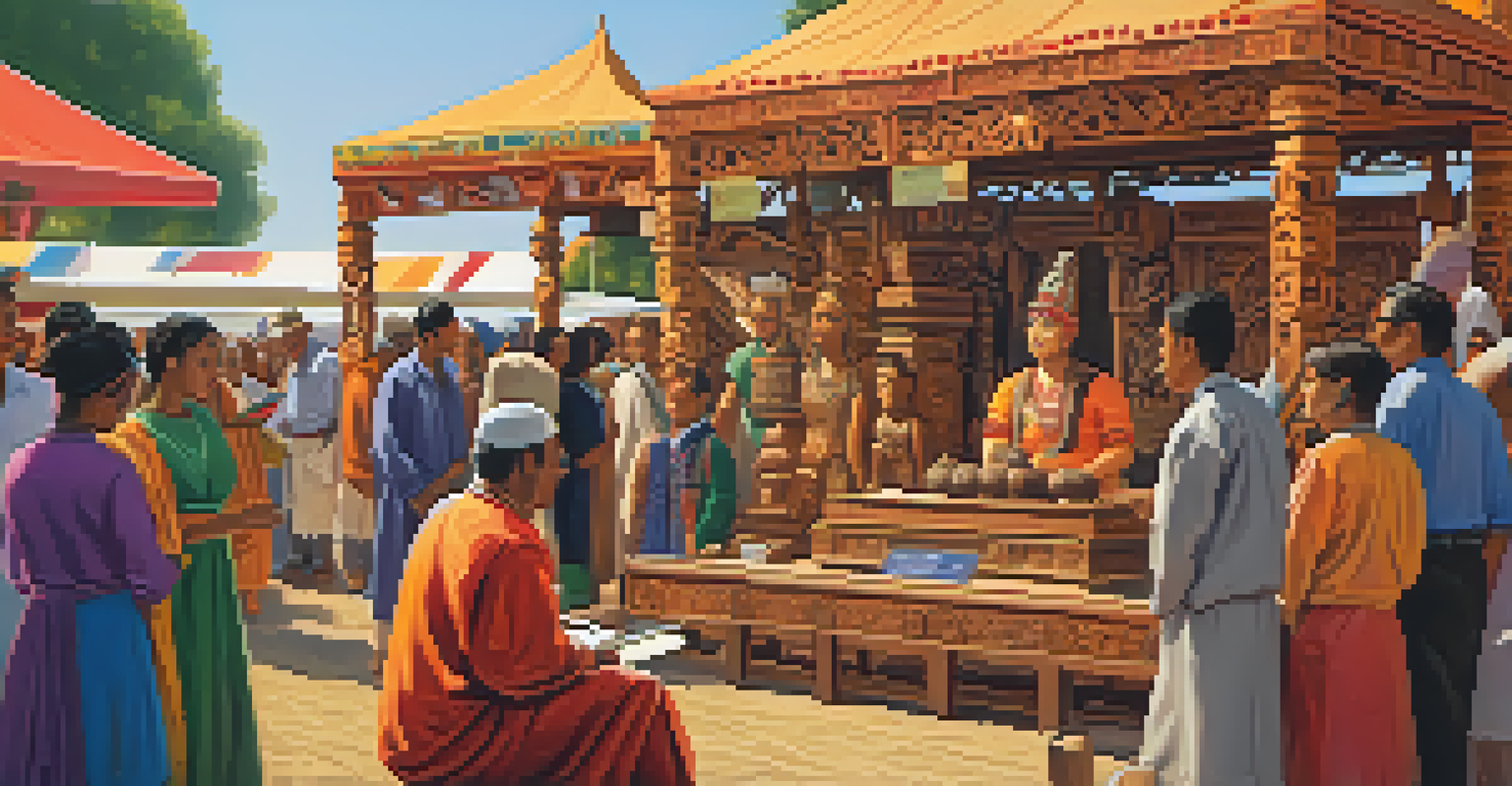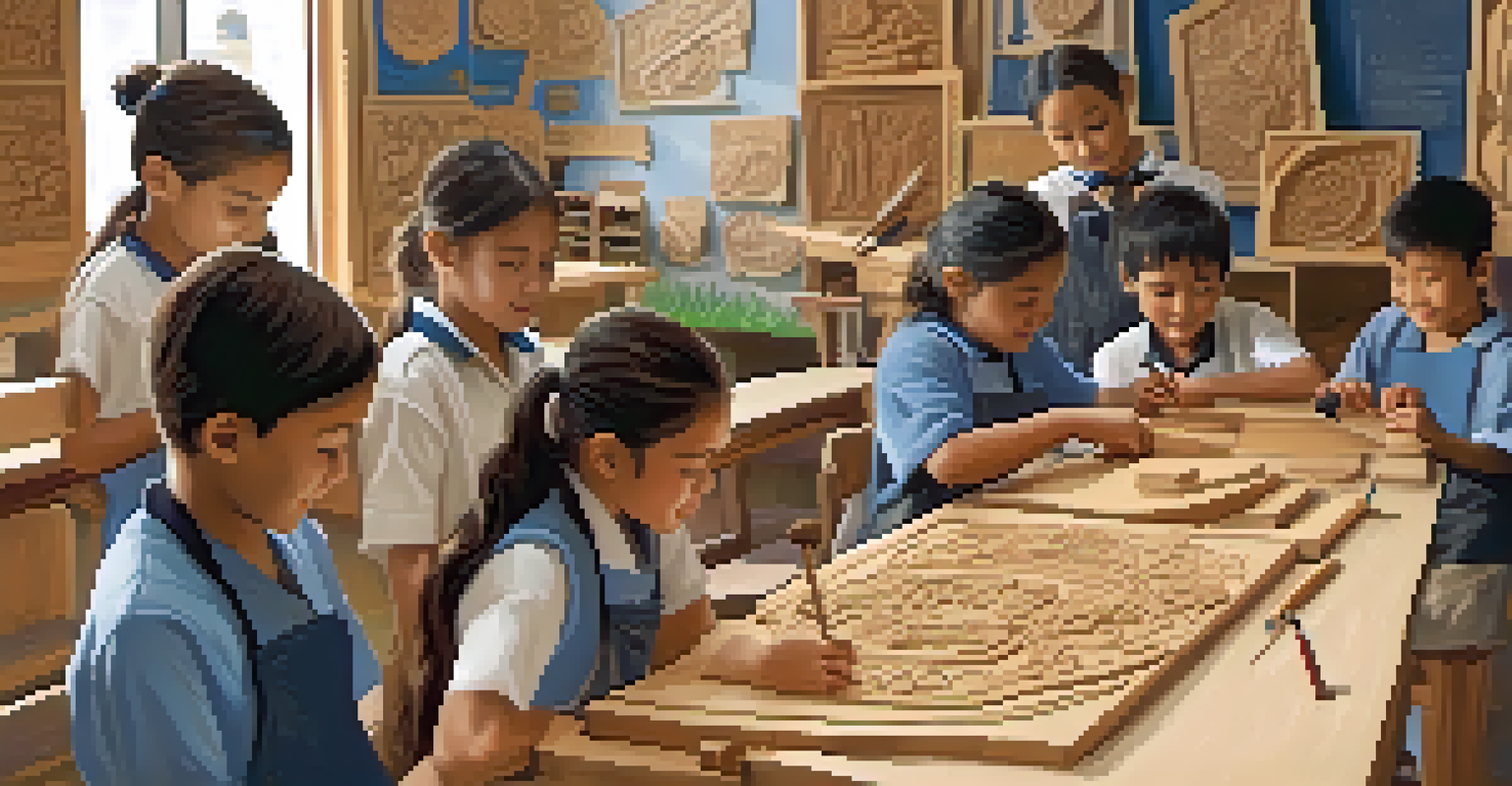Cultural Carving Projects: Celebrating Heritage and Unity

Understanding Cultural Carving and Its Importance
Cultural carving refers to the practice of creating artistic representations that reflect the traditions and stories of a specific culture. These carvings often use materials like wood, stone, or bone, transforming them into powerful symbols of identity and heritage. Through these art forms, communities can express their values, beliefs, and history, making cultural carving a vital part of cultural preservation.
Art is a reflection of society, and cultural carving reflects the identity and heritage of the people.
In many societies, carving is not just an art; it's a way to honor ancestors and share stories that have been passed down through generations. For instance, Indigenous tribes often carve totem poles that narrate the tales of their people, serving as both art and history. This connection to the past helps bridge the gap between generations, reminding younger members of their roots.
Furthermore, cultural carving promotes a sense of pride and belonging among community members. When individuals see their culture represented in art, it reinforces their identity and encourages them to engage with their heritage. This shared experience can be incredibly unifying, fostering a stronger community spirit.
Projects That Bring Communities Together
Cultural carving projects often involve collaboration among various community members, enhancing relationships and understanding. These initiatives can range from workshops where individuals learn carving techniques to community festivals showcasing finished pieces. Such gatherings not only celebrate the art but also create a space for dialogue and exchange of ideas.

For example, a community carving project might invite local artists to mentor youth, teaching them traditional techniques while sharing stories related to the carvings. This mentorship aspect not only cultivates skills but also nurtures respect for cultural heritage. The result is a vibrant intergenerational dialogue that enriches everyone involved.
Education Enriches Carving Traditions
Educational initiatives in cultural carving projects are essential for instilling pride and preserving traditional skills across generations.
Moreover, these projects can draw in participants from diverse backgrounds, promoting unity through shared experiences. When people come together to create something meaningful, it breaks down barriers and fosters inclusivity. This collaborative spirit is essential for building a strong, cohesive community.
Celebrating Cultural Diversity Through Carving
Cultural carving projects highlight the rich tapestry of human expression found in different traditions. By showcasing various carving styles and techniques, these projects celebrate the uniqueness of each culture while fostering appreciation for diversity. When communities share their carving practices, they educate others and promote a broader understanding of global cultures.
The more we know about our own culture, the more we can appreciate others.
An example of this can be seen in multicultural festivals where different communities display their carvings, often accompanied by storytelling sessions. Attendees can learn about the significance behind each piece, deepening their appreciation for the artistry and the culture it represents. This kind of exchange enriches the community and encourages respect for cultural differences.
Additionally, the visibility of diverse carvings can inspire new generations of artists to explore their heritage. Young people who see their culture celebrated in public spaces are more likely to embrace their identity and carry forward those traditions. In this way, cultural carving projects serve as a powerful tool for cultural continuity.
The Role of Education in Cultural Carving Projects
Education plays a crucial role in the success of cultural carving projects. Workshops and classes that teach carving techniques not only impart skills but also instill a sense of cultural pride. Many of these educational initiatives are designed to engage students of all ages, from school children to adults, emphasizing the importance of learning about one's heritage.
For example, local schools might partner with community artists to incorporate carving projects into art curricula. This hands-on approach allows students to connect with their cultural roots while developing artistic skills. Such programs often culminate in public displays of student work, showcasing their learning journey and the significance of their cultural heritage.
Cultural Carving Preserves Heritage
Cultural carving serves as a vital means for communities to express their identity, values, and history through artistic representations.
In addition to formal education, informal learning through community gatherings and storytelling sessions can enhance understanding. When participants share their experiences and knowledge, it creates a rich educational environment. This collaborative learning not only preserves carving traditions but also invigorates them, ensuring they remain relevant for future generations.
Challenges Faced by Cultural Carving Projects
While cultural carving projects can be incredibly rewarding, they often face a range of challenges. Funding is a common issue, as many community initiatives rely on grants or donations to sustain their activities. Without sufficient financial resources, projects can struggle to maintain momentum or reach a wider audience.
Another challenge is the loss of traditional skills as older generations pass away. Many carving techniques and stories are at risk of being forgotten if not actively taught and practiced. This can create a gap in knowledge, making it difficult for younger community members to connect with their heritage.
Finally, there is the challenge of cultural appropriation, which can occur when individuals from outside a culture attempt to use its symbols or techniques without understanding their significance. This can lead to misunderstandings and disrespect toward the original culture. Ensuring that projects prioritize authentic representation and participation from community members is vital for overcoming this challenge.
Engaging the Wider Community Through Exhibitions
Exhibitions are a fantastic way to engage the wider community and showcase the work produced in cultural carving projects. By inviting the public to view the carvings, these exhibitions not only celebrate the artists but also educate attendees about the culture behind the art. This interaction can spark interest and encourage participation in future projects.
For instance, a community might host an exhibition at a local gallery or community center, featuring not just the carvings but also workshops, demonstrations, and storytelling sessions. Such events create immersive experiences where visitors can learn about the carving process and its cultural significance firsthand. This hands-on approach can inspire individuals to get involved.
Community Projects Foster Unity
Collaborative cultural carving projects bring community members together, enhancing relationships and promoting inclusivity through shared experiences.
Moreover, exhibitions can help raise awareness about the importance of cultural preservation. When community members see their heritage represented in art, it fosters a sense of pride and responsibility to protect and promote their culture. This broader engagement can lead to increased support for cultural initiatives and a deeper appreciation for the diversity within the community.
The Future of Cultural Carving Projects
Looking ahead, the future of cultural carving projects appears promising, especially with the rise of technology and social media. These platforms offer new ways to share and promote carving art, making it accessible to a global audience. Artists can showcase their work online, connect with others, and even collaborate on projects across borders.
Additionally, as awareness of cultural heritage grows, there is likely to be increased interest in participating in carving projects. More individuals are seeking ways to connect with their roots, and cultural carving offers a tangible means of doing so. This resurgence of interest can lead to revitalized traditions and the emergence of new styles that blend the old with the new.

Finally, ongoing support from educational institutions, governments, and cultural organizations will be crucial in sustaining these projects. By investing in cultural carving initiatives, communities can ensure that their heritage continues to thrive and inspire future generations. The fusion of tradition and innovation will keep cultural carving alive, enriching communities for years to come.